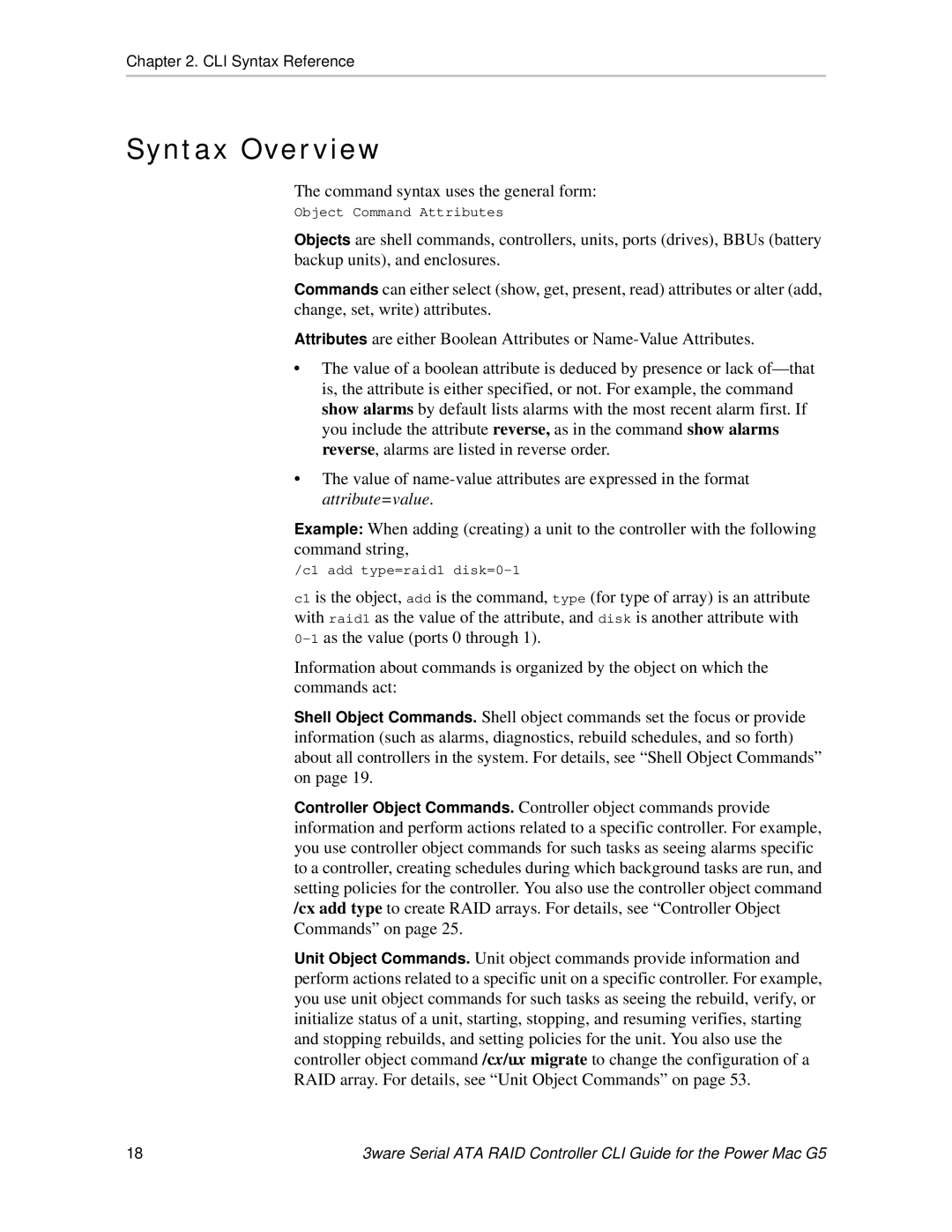Chapter 2. CLI Syntax Reference
Syntax Overview
The command syntax uses the general form:
Object Command Attributes
Objects are shell commands, controllers, units, ports (drives), BBUs (battery backup units), and enclosures.
Commands can either select (show, get, present, read) attributes or alter (add, change, set, write) attributes.
Attributes are either Boolean Attributes or
•The value of a boolean attribute is deduced by presence or lack
•The value of
Example: When adding (creating) a unit to the controller with the following command string,
/c1 add type=raid1
c1 is the object, add is the command, type (for type of array) is an attribute with raid1 as the value of the attribute, and disk is another attribute with
Information about commands is organized by the object on which the commands act:
Shell Object Commands. Shell object commands set the focus or provide information (such as alarms, diagnostics, rebuild schedules, and so forth) about all controllers in the system. For details, see “Shell Object Commands” on page 19.
Controller Object Commands. Controller object commands provide information and perform actions related to a specific controller. For example, you use controller object commands for such tasks as seeing alarms specific to a controller, creating schedules during which background tasks are run, and setting policies for the controller. You also use the controller object command /cx add type to create RAID arrays. For details, see “Controller Object Commands” on page 25.
Unit Object Commands. Unit object commands provide information and perform actions related to a specific unit on a specific controller. For example, you use unit object commands for such tasks as seeing the rebuild, verify, or initialize status of a unit, starting, stopping, and resuming verifies, starting and stopping rebuilds, and setting policies for the unit. You also use the controller object command /cx/ux migrate to change the configuration of a RAID array. For details, see “Unit Object Commands” on page 53.
18 | 3ware Serial ATA RAID Controller CLI Guide for the Power Mac G5 |
